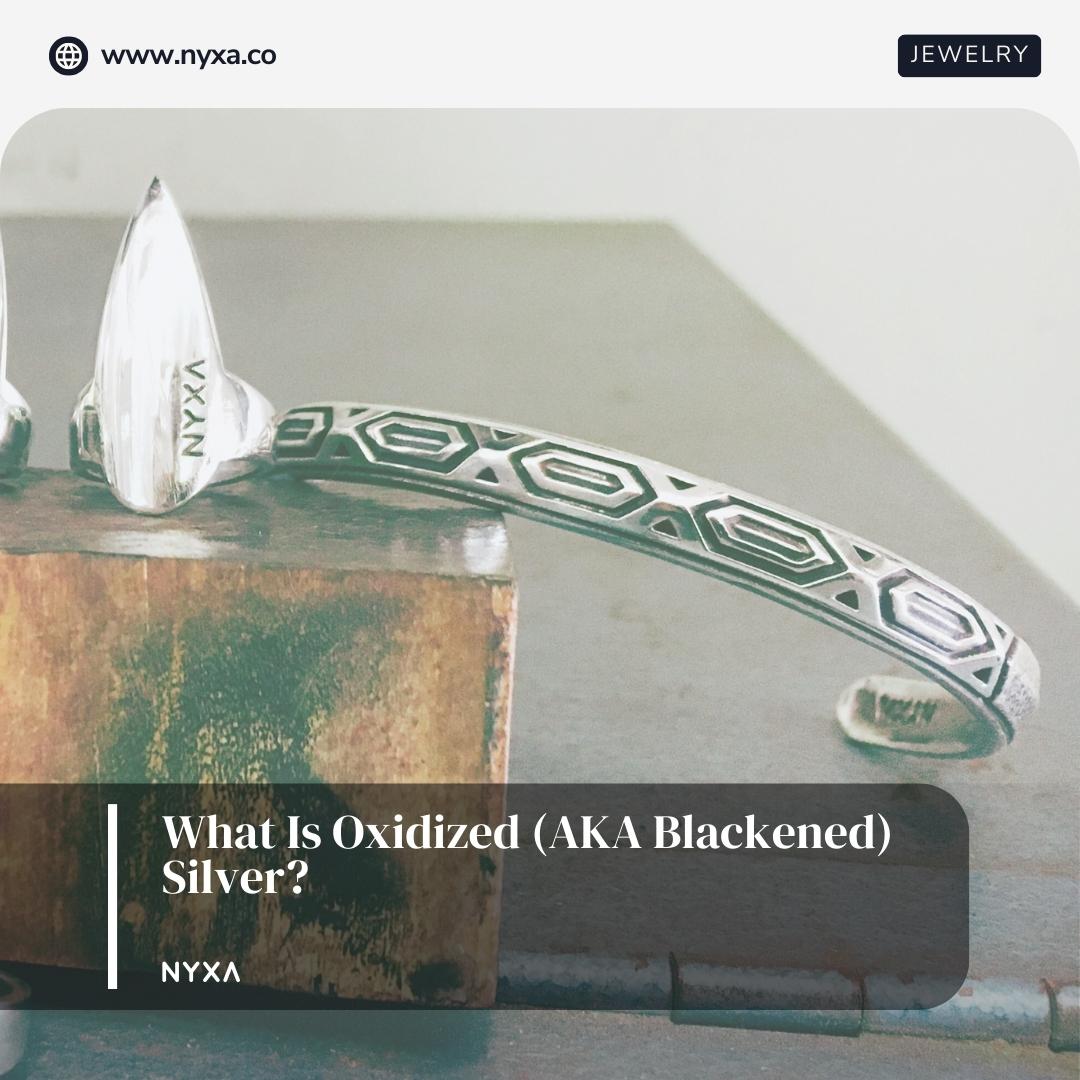
What Is Oxidized (AKA Blackened) Silver?
Share
In the realm of contemporary jewelry, blackened silver has emerged as a trend, adding a touch of edge and sophistication to designs. Here, we delve into the world of oxidized silver, exploring its unique characteristics and how it evolves over time.

What is Oxidized Silver?
Oxidized silver, also known as "blackened silver" and often seen in our genderless and size-inclusive sterling silver jewelry, is authentic sterling silver subjected to a deliberate chemical process. This process introduces sulfides, creating a patina that accelerates the natural tarnishing of silver. The result is a striking blackened appearance, at times, enhancing the contrast with gemstones and diamonds.
Although commonly termed "oxidizing," it's crucial to note that oxygen isn't the catalyst; sulfides are. Despite this technicality, the industry has embraced the term. At NYXA, we employ compounds like liver of sulphur, a potassium sulfide, to achieve the blackened surface. The spectrum of colors, from matte gunmetal black to vibrant blues, purples, yellows, and reds, offers endless possibilities.
Like other patinas, oxidized silver is a surface treatment that doesn't alter the metal's internal color or properties.
How Does Oxidized Silver Wear?
As a surface treatment, oxidized silver evolves over time, revealing the true silver beneath. The rate of change depends on wear and contact. Earrings and necklaces, experiencing minimal contact, maintain the blackened finish longer than rings and bracelets, which encounter more frequent rubbing.
To preserve the dark color, it's advisable to remove oxidized silver jewelry during activities involving aggressive contact, showering, or handwashing.
How to Clean Oxidized Silver
Avoid using jewelry cleaning dips or aggressive polishing, as these can strip the blackened surface. If cleaning is necessary, opt for mild dish detergent and a soft toothbrush with minimal rubbing.
Restoration of the oxidized finish is possible at any time.

How to Keep Oxidized Silver Black
Use this simple DIY method involving hard-boiled egg yolks to re-blacken your oxidized sterling silver jewelry at home. Follow our step-by-step guide to discover the magic within your kitchen and elevate your jewelry game.
- Step 1: Gather Your Supplies - Start by assembling the necessary items for this DIY project. You'll need sterling silver jewelry, hard-boiled egg yolks, a sealable container, and a soft cloth for polishing.
- Step 2: Prepare Your Workspace - Find a well-ventilated area to set up your DIY station. Lay down a protective surface to avoid any potential mess.
- Step 3: Peel and Mash the Egg Yolks - Take the hard-boiled eggs and carefully separate the yolks. Mash them into a paste-like consistency. The sulfur in the egg yolks plays a key role in the oxidation process.
- Step 4: Create a Sealable Container - Place your sterling silver pieces in a sealable container. Add the mashed egg yolks to the container, ensuring that each piece is covered evenly.
- Step 5: Let It Sit - Seal the container and allow it to sit for several hours or overnight. The longer the exposure, the deeper the blackening effect. Keep an eye on the progress to achieve your desired oxidized silver shade.
- Step 6: Remove and Polish - Once the desired effect is achieved, carefully remove your jewelry from the container. Use a soft cloth to polish the pieces, revealing the stunning oxidized silver finish.
- Step 7: Optional, Repeat the Process - For a more intense blackened effect, consider repeating the process. Experiment with different durations to achieve varying shades of oxidized silver.
The oxidized finish of jewelry can be restored at any time. If you're not interested in taking the DIY route, simply ask the maker for a re-blackening (NYXA will happily re-blacken any items from our collection at no charge) or inquire at your local jeweler to see if they can touch up your oxidized finish.
